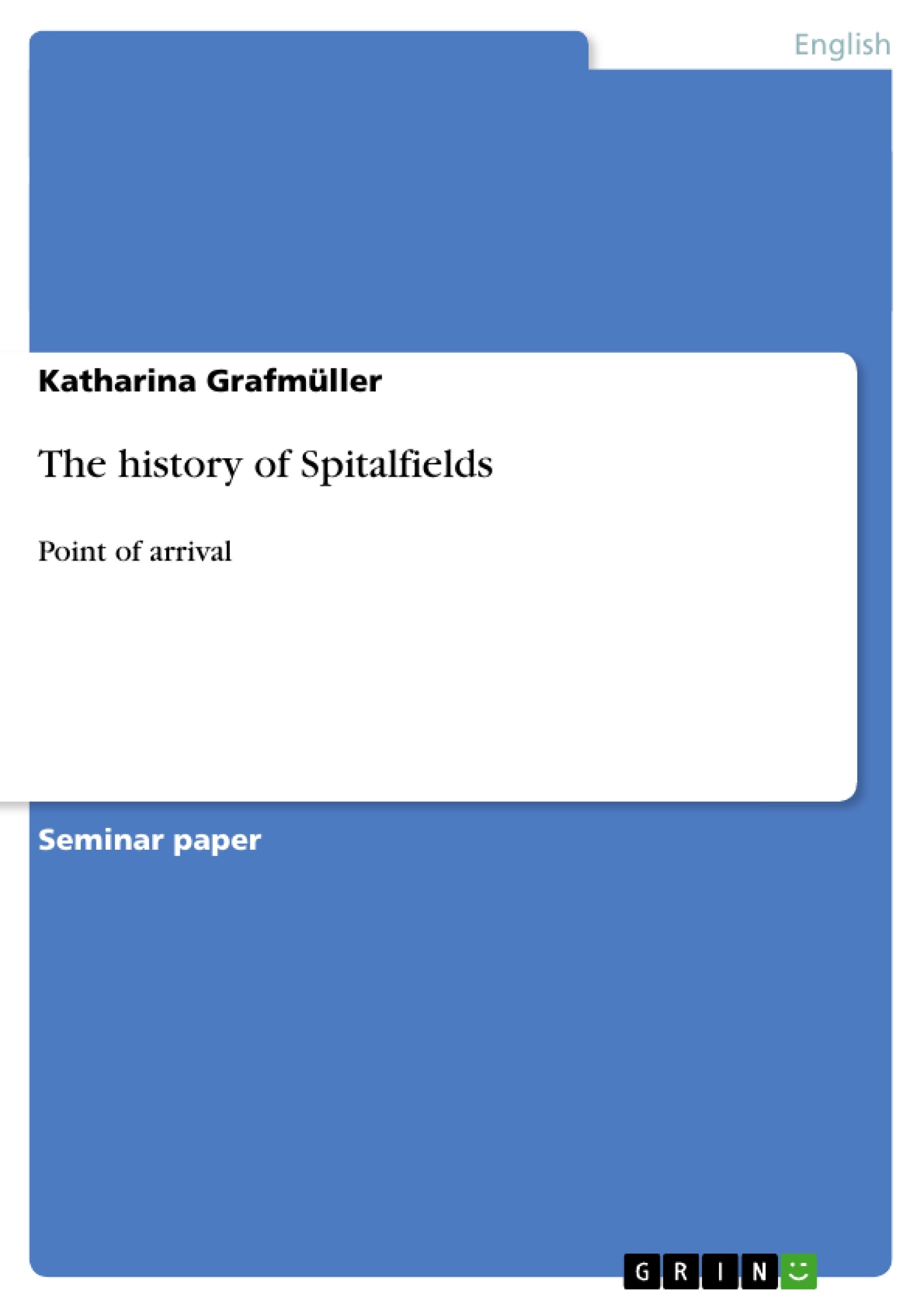The name ‘Spitalfields’ refers to St. Mary’s Spital, a hospital and a priory founded in 1197, at
the east end of London. Up to the 17th century the area mainly consisted of gardens and fields,
but with the waves of immigrants the house building started. Spitalfields has been a great
access point for immigrants from all over the world in the last few centuries. The best
example for this changing of inhabitants is the building at the corner of Brick Lane/ Fournier
Street: It started as a protestant church in 1774, in 1897 it was turned into a synagogue and
finally in 1975 it became the London Jamme Masjid Moshe.
In 1685 the ‘Edict of Nantes’ from 1598 was revoked by Louis XIV (www.wikipedia.org) and
the radical Protestants in France were forced to leave the country. Many of them settled down
in Spitalfields.
During the 19th century the population in Ireland grew poorer and poorer. Many left their
home country to try to make their living elsewhere and the better part of them also moved to
Spitalfields.
At the same time the Jews in Eastern Europe were persecuted and they, too, chose Spitalfields
as their new living space.
Eventually in the 1970s people from South Asia started populating Spitalfields for the better
working and living conditions in Great Britain. Today the area is called ‘Banglatown’ and a
centre of South Asian Life and culture in London. Many of the street signs in ‘Banglatown’
are both in English and Bengali and it consists of lots of restaurants with Bengali Food.
The following peace of work will describe the living conditions of the particular groups of
immigrants in detail and explain their influence on Spitalfields.
[...]
Inhaltsverzeichnis (Table of Contents)
- Introduction
- The Huguenots
- The Irish Immigrants
- The Jews
- Conclusion
Zielsetzung und Themenschwerpunkte (Objectives and Key Themes)
This work aims to detail the history of Spitalfields, London, focusing on the impact of successive waves of immigration on the area's development and character. It explores the experiences of different immigrant groups and their contributions to the social and economic fabric of Spitalfields.
- Immigration and its impact on Spitalfields' development
- The experiences of Huguenot immigrants in Spitalfields
- The role of Spitalfields as a center for various immigrant communities
- The evolution of Spitalfields' social and economic landscape
- The cultural contributions of immigrant groups to Spitalfields
Zusammenfassung der Kapitel (Chapter Summaries)
Introduction: This chapter introduces Spitalfields, its origins, and its historical significance as a focal point for immigration. It briefly touches on the waves of immigration from various communities and the transformation of the area over time.
The Huguenots: This section delves into the history of Huguenot immigration to Spitalfields following the revocation of the Edict of Nantes. It examines their contributions to the silk industry, their living conditions, their community life, and their eventual assimilation into English society. It also highlights the social unrest and riots that occurred and the eventual appeasement through the Spitalfields Act of 1773.
The Irish Immigrants: [This section is absent from the provided text and would need to be added if available.]
The Jews: [This section is absent from the provided text and would need to be added if available.]
Schlüsselwörter (Keywords)
Spitalfields, immigration, Huguenots, silk industry, social unrest, community, assimilation, London, Edict of Nantes, 18th century, economic impact, cultural impact.
- Arbeit zitieren
- Katharina Grafmüller (Autor:in), 2007, The history of Spitalfields, München, GRIN Verlag, https://www.grin.com/document/122348



